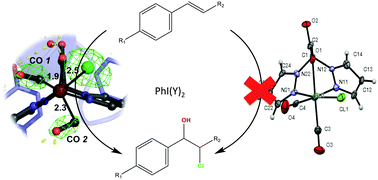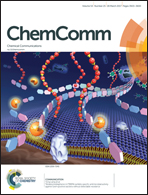Efficient conversion of alkenes to chlorohydrins by a Ru-based artificial enzyme†
Abstract
Artificial enzymes are required to catalyse non-natural reactions. Here, a hybrid catalyst was developed by embedding a novel Ru complex in the transport protein NikA. The protein scaffold activates the bound Ru complex to produce a catalyst with high regio- and stereo-selectivity. The hybrid efficiently and stably produced α-hydroxy-β-chloro chlorohydrins from alkenes (up to 180 TON with a TOF of 1050 h−1).



 Please wait while we load your content...
Please wait while we load your content...